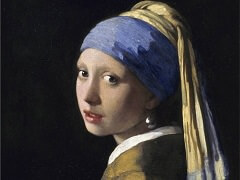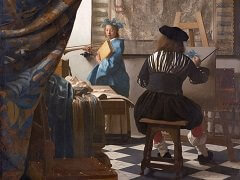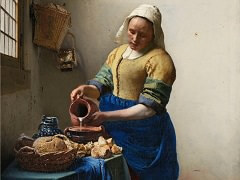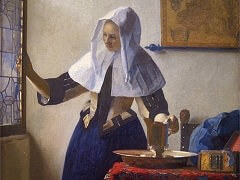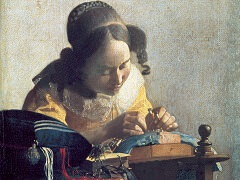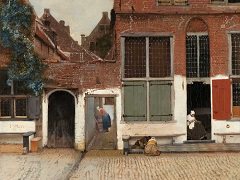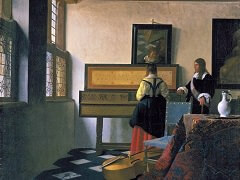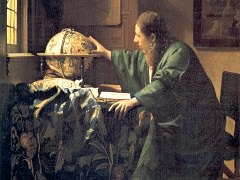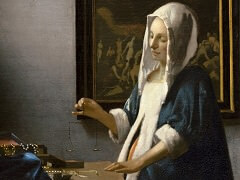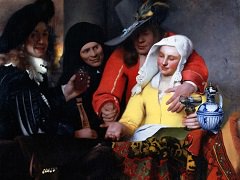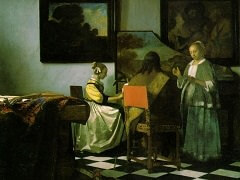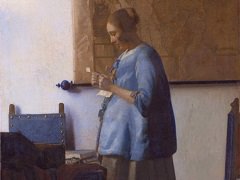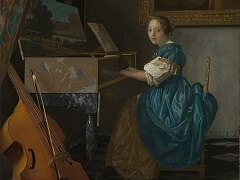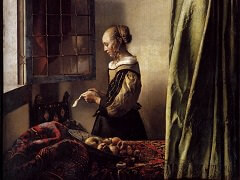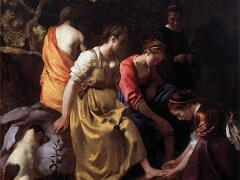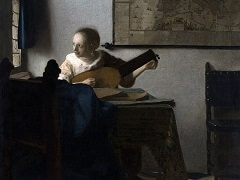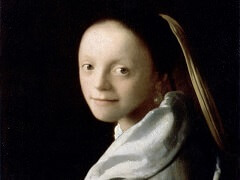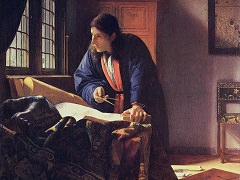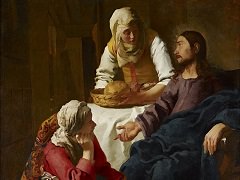The Love Letter, 1669 by Johannes Vermeer
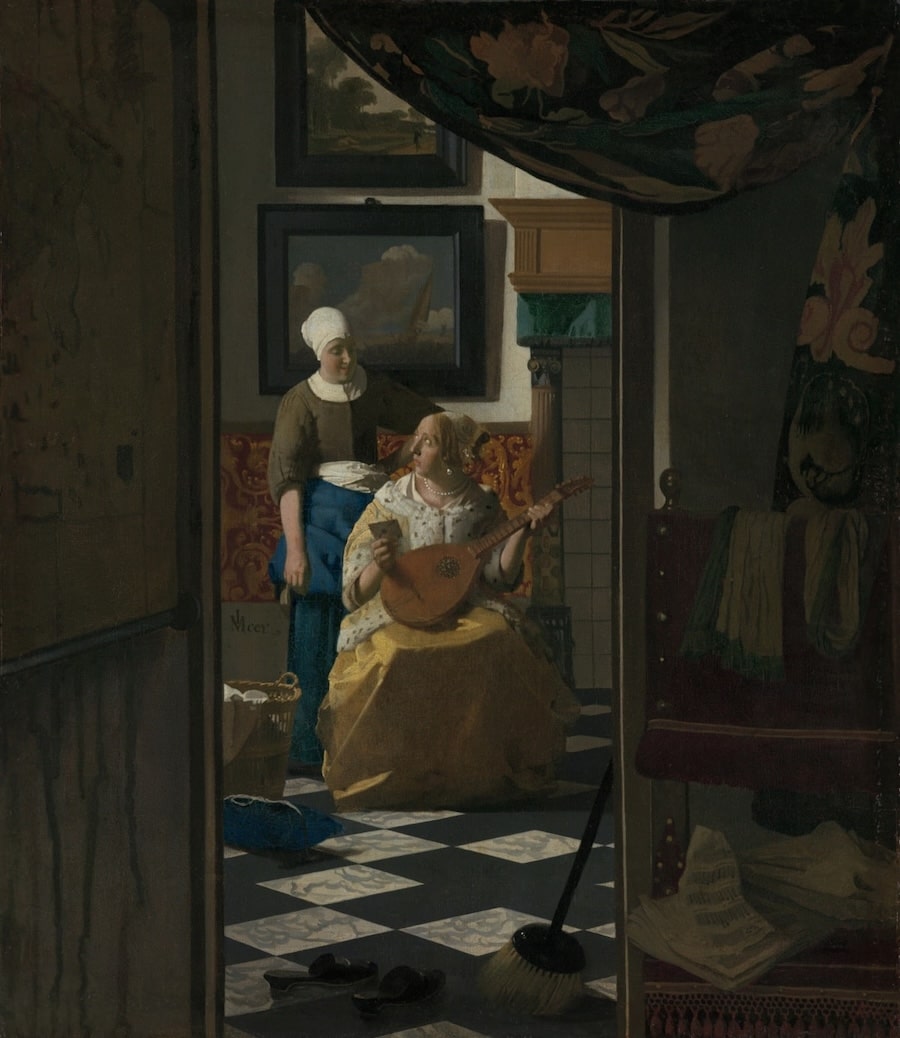
The tied-up curtain in the foreground creates the impression that the viewer is looking at an intensely private, personal scene. There is also an element of trompe l'oeil as Dutch paintings were
often hung with little curtains to conserve them, and the device of painted curtains is seen in other Dutch works of the period. The diagonals on the chequered floor create the impression of
depth and three-dimensionality. The fact that it is a love letter that the woman has received is made clear by the fact that she is carrying a lute. The lute was a symbol of love - often carnal
love; luit was also a slang term for vagina. This idea is further reinforced by the slippers at the very bottom of the picture. The removed slipper was another symbol of sex. The floor brush would
appear to represent domesticity, and its placement at the side of the painting may suggest that domestic concerns have been forgotten or pushed aside.
A recurring concern for Vermeer was the creation of the semblance of privacy in his paintings. To achieve this effect he used many devices. He placed figures behind large pieces of furniture,
tables, or chairs to separate them from the viewer. He hung curtains in the foreground or placed his figures on the far side of a large room. Invariably he portrayed people in moments when they were
preoccupied with some activity or with their own thoughts and were unaware of being observed. The culmination of this interest in portraying those private, unguarded moments in life is
The Love Letter. In this remarkable painting Vermeer, in a way that anticipates the "keyhole" realism of Degas in the nineteenth century, portrayed
the figures through a doorway.

